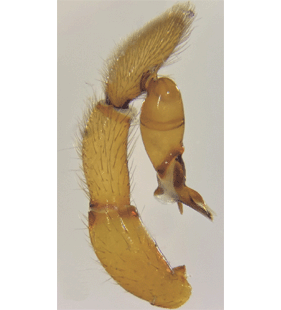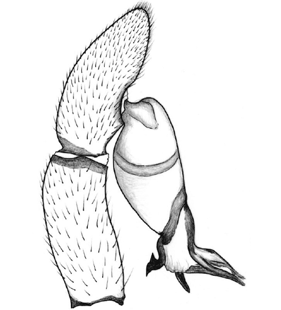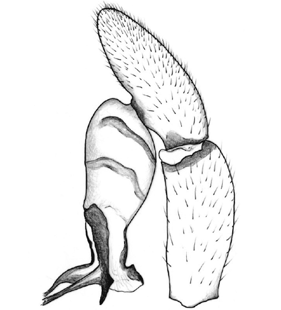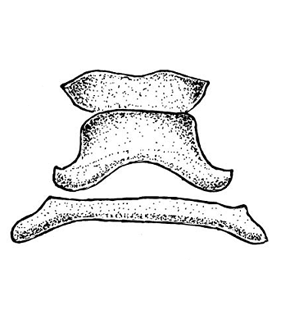Dysdera presai Ferrández, 1984
Beschreibung
Männchen
Bulbus mit 2 Formen: eine Form mit einem dornenförmigen Fortsatz, welcher die Verlängerung des vorderen sklerotisierten Streifens darstellt und die Spitze des Bulbus mit einigen zugespitzten Laminae und einer zweiten Form ohne Fortsatz und die Spitze des Bulbus mit einigen kurzen und breiten Laminae. Prosoma 2.2-3.7 mm lang.
Körperlänge Männchen: 5.8-7.9 mmWeibchen
Prosoma 2.8-4 mm lang. Beine: Femur I mit einem oder 2 Stacheln, Femur II mit einem Stachel, Femur III mit einem bis 3 Stacheln, Femur IV mit 3 bis 5 Stacheln.
Körperlänge Weibchen: 6.3-9.7 mmZusätzliche Informationen
In trockenen Gebieten.
Verbreitung
Abbildungen
Verbreitungsnachweise
"No reference" bedeutet nicht, dass die Art in diesem Land nicht vorkommt, sondern dass wir die Referenz hierfür noch nicht eingefügt haben. Wir arbeiten daran.
Literatur
Barrientos J A, De Mas E, Gavín-Centol M P, Pertegal C, Salazar B, Fenoy E, Balanzategui I, Mederos J, Montserrat M, Barranco P, Moya-Laraño J (2024c) Arañas (Arachnida: Araneae) del Parque Natural de Cabo de Gata-Níjar (Almería, España); 2ª aportación. Revista Ibérica de Aracnología 45: 27-59 ![]()
Branco V V, Morano E, Cardoso P (2019) An update to the Iberian spider checklist (Araneae). Zootaxa 4614: 201-254 ![]()
Ferrández M A (1989) Notas sobre los disdéridos ibéricos. V. Nuevos datos, cartografía y caracterización de la hembra de Dysdera presai Ferrández, 1985 (Araneae: Dysderidae). Anales de Biologia, Universidad de Murcia 15: 29-31 ![]()
WSC (2025) World Spider Catalog. Version 26. Natural History Museum Bern, online at http://wsc.nmbe.ch (28.2.2025) doi: 10.24436/2 ![]()
Updates
| 08-01-2025 | Image insert | |
| 26-03-2013 | Image insert |





